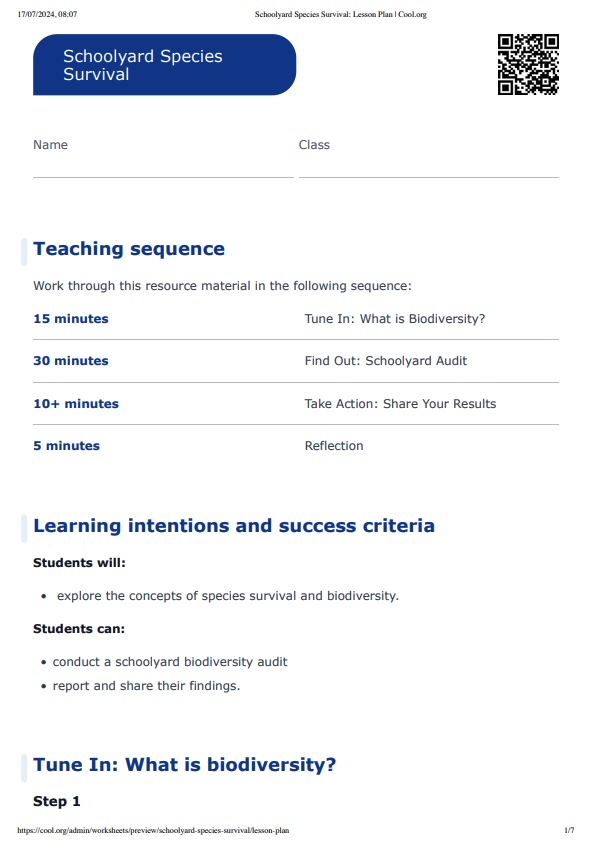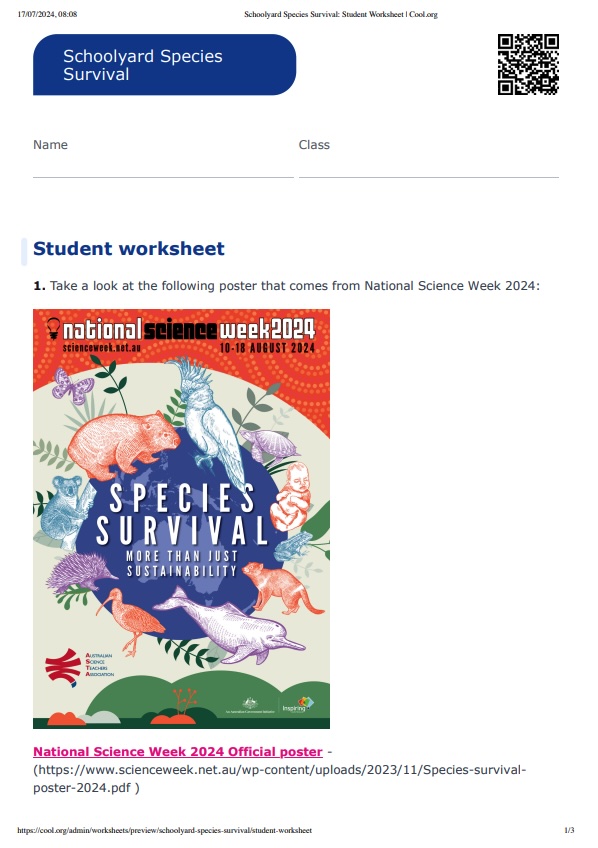Lesson summary
Students will investigate what biodiversity is and how it relates to the concept of species survival. Students will conduct a biodiversity audit of their schoolyard, and will analyse and share their findings with the school community.
Learning intentions:
Students will...
- explore the concepts of species survival and biodiversity.
Success criteria:
Students can...
- conduct a schoolyard biodiversity audit
- report and share their findings.
Lesson guides and printables
Curriculum links
Select your curriculum from the options below.
Lesson details
Skills
This lesson is designed to build students’ competencies in the following skills:
- creative thinking
- critical thinking
- collaboration
- communication
- curiosity
Curriculum Mapping
Australian Curriculum (v9.0) content description:
Year 7 and 8, Science
- explain how evidence or different perspectives can lead to changes in scientific knowledge (AC9S7H01, AC9S8H01).
Relevant parts of Year 7 and 8 achievement standards: Students identify and analyse how different factors influence the development of and lead to changes in scientific knowledge.
NSW Syllabus outcomes:
- follows a planned procedure to undertake safe and valid investigations (SC4-WS-04).
General capabilities: Critical and Creative Thinking, Numeracy
Cross-curriculum priority: Sustainability
Level of teacher scaffolding: Medium - lead students in class discussion, and oversee biodiversity audit and analysis of results.
UN Sustainable Development Goals
- Target 15.5: Take urgent and significant action to reduce the degradation of natural habitats, halt the loss of biodiversity and, by 2020, protect and prevent the extinction of threatened species.
Resources Required
- Devices for taking photos
- Magnifying glass
- Paper and pens/pencils.
Additional Info
This is an original Cool.org lesson.
Related Professional Learning
How To Teach Sustainability With Hope - Primary and Secondary
Quick Summary: This course is designed for teachers of all subjects to discover how to bring hope to challenging, upsetting or worrying topics around sustainability.
What Makes Something Threatened?
Quick Summary: This course explores biodiversity and threatened species within Australia with Ecologist Thomas Nixon. The course will help you discover how biodiversity is regulated in Australia, and how you can take action to protect our unique biodiversity.



Welcome back!
Don't have an account yet?
Log in with:
Create your free Cool.org account.
Many of our resources are free, with an option to upgrade to Cool+ for premium content.
Already have an account?
Sign up with:
By signing up you accept Cool.org's Terms and Conditions(Opens in new tab) and Privacy Policy(Opens in new tab).